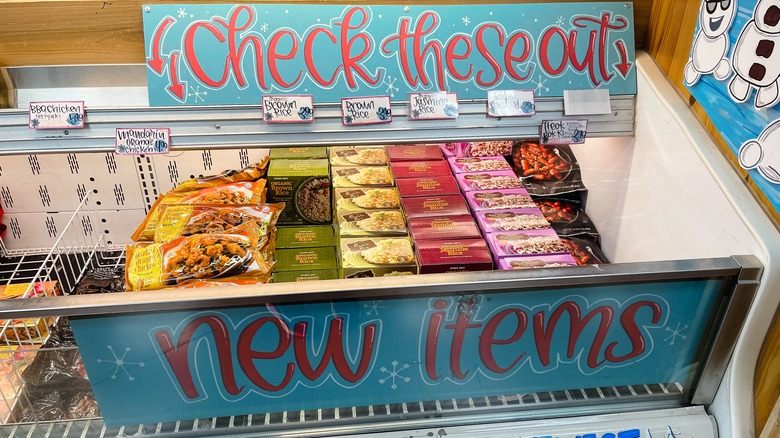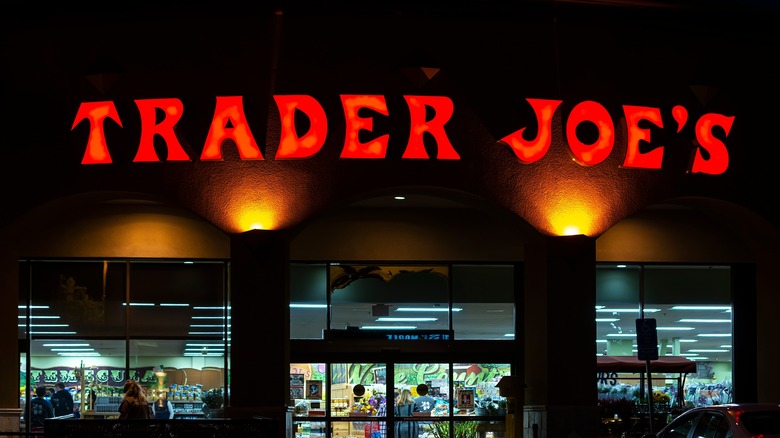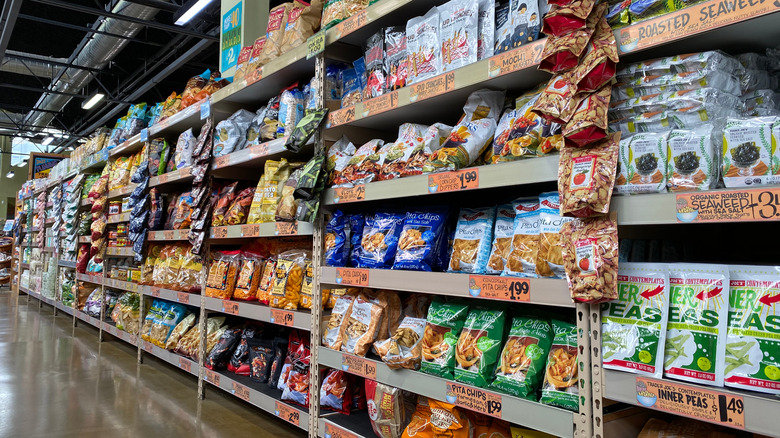The 'Tasting Panel' All Trader Joe's Products Must Pass Before Hitting Shelves
Trader Joe's exists in an odd little cultural niche, simultaneously seeming upscale and inexpensive. Its inventory, by placing great emphasis on health and environmental impact, courts a similar type of customer to rival Whole Foods. The chain boasts low prices, yet builds stores in affluent neighborhoods. This has been a theme since the brand's inception, with founder Joe Coulombe specifically targeting well-educated and well-traveled customers, though not necessarily wealthy ones. An eye for design is a big part of the appeal, with the stores' rustic wooden shelving, hand-written signs, and nautical trade post vibes evoking words like 'quaint' and 'whimsical,' but the food is the real selling point.
Trader Joe's image hinges on quirky, store-branded products like cookie butter and pumpkin cream cheese. Offering unique items makes TJ's a destination grocery. The crazy thing is that most of Trader Joe's products are made by the same name-brand companies that supply other stores, just repackaged to fit TJ's aesthetic. For example, the pistachios are produced by Wonderful Pistachio, the bottled smoothies come from Naked Juice, and the pretzel chips come from Snack Factory. However, Trader Joe's won't slap its name onto just any product, and since it offers a narrower selection than other groceries, only a select few ever make it to the shelves. Before they get to that point, they must pass through the gauntlet of Trader Joe's tasting panel.
Trader Joe's tasting panel is shrouded in secrecy
Every Trader Joe's product must be approved by its tasting panel made up of a cross-section of employees. Little is known about the selection process save that its members are chosen by higher-ups. Their identities are hidden to prevent them from being influenced by outside suppliers vying for shelf space. The store once let a reporter photograph the panel on the condition that all its members wear bags over their heads. That's how seriously the higher-ups take this. Testing is performed in an interrogation-like environment with bare walls and fluorescent lights. The idea here is that a positive environment could make you overlook a product's flaws. The same cup of tea that tastes delightful snuggled up before a fire might not taste as good on a bleak morning at the office. TJ's needs it both ways.
The panel evaluates every aspect of the food, not just the way it tastes. An episode of the podcast "Inside Trader Joe's" revealed that the tasters' input often focuses on price points, labels, and packaging. They recall a test for lentil chips in which one panel member suggested putting them in a more rigid bag to prevent crumbling in transit. Even dog treats need approval, so they're tested by the panelists' pets. Passing the test requires more than a simple majority, as the grocer wants surefire hits on its shelves. Items must receive at least 70% approval from panel members before advancing to the retail stage.
Why Trader Joe's tasting panel is unique
What makes Trader Joe's tasting panel worthy of attention is the way it contrasts with other grocery chains. Such testing is not the norm. At most stores, manufacturers must pay a 'slotting fee,' or 'slotting allowance' in exchange for shelf space. In theory, slotting fees are designed to reduce the risk for retailers who might be taking a gamble on certain products and to encourage manufacturers to be more invested in the quality of those products. However, slotting fees favor the largest food and beverage conglomerates. For many small businesses, the up-front fee represents an insurmountable obstacle to success. Most concerning of all are the fears that slotting fees favor junk food brands, and give customers fewer healthy options to choose from.
Trader Joe's imposes no slotting fees, using their tasting panel to make quality-based decisions. It would be nice if other groceries followed this model, but that may be an unrealistic goal. The grocery business is one of thin margins, and most retailers offer a high volume of products leading to a fragile risk-reward situation. Trader Joe's, however, offers a low volume of products. While the typical supermarket carries around 50,000 different items, Trader Joe's only carries about 4,000. They don't need to pay back nearly as many suppliers, and they can be more selective about their inventory. Being more exclusive and grouping most products under a store brand comes at the expense of variety though, so it's ultimately a tradeoff.


